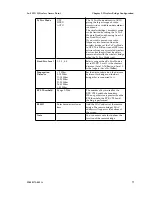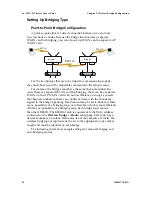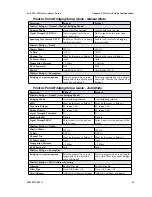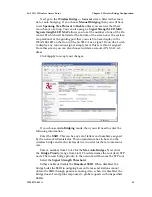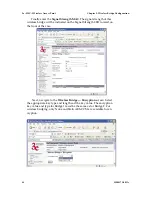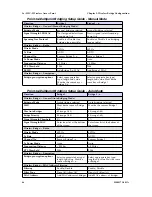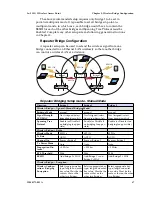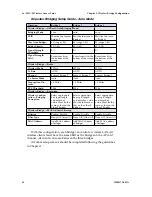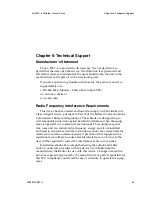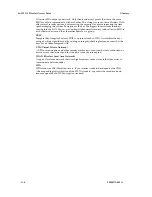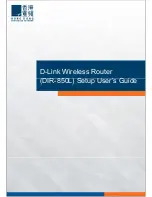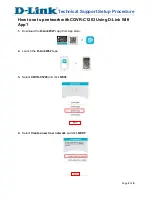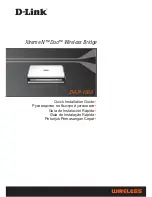
3e–525C–3 Wireless Access Point
Glossary
29000171-001 A
G-a
Glossary
3DES
Also referred to as Triple DES, a mode of the DES encryption algorithm that encrypts data
three times.
802.11
802.11 refers to a family of specifications developed by the IEEE for wireless LAN technol-
ogy. 802.11 specifies an over-the-air interface between a wireless client and a base station
or between two wireless clients. The IEEE accepted the specification in 1997.
802.11b (also referred to as 802.11 High Rate or WiFi)
802.11b is an extension to 802.11 that applies to wireless LANs and provides 11 Mbps
transmission (with a fallback to 5.5, 2 and 1 Mbps) in the 2.4 GHz band. 802.11b uses only
DSSS. 802.11b was a 1999 ratification to the original 802.11 standard, allowing wireless
functionality comparable to Ethernet.
Access Point
An access point is a gateway set up to allow a group of LAN users access to another group
or a main group. The access point doesn’t use the DHCP server function and therefore ac-
cepts IP address assignment from the controlling network.
Bridge
A device that connects two local-area networks (LANs), or two segments of the same LAN
that use the same protocol, such as Ethernet or Token-Ring.
DHCP
Short for Dynamic Host Configuration Protocol, DHCP is a protocol for assigning dy-
namic IP addresses to devices on a network. With dynamic addressing, a device can have
a different IP address every time it connects to the network. In some systems, the device’s
IP address can even change while it is still connected. DHCP also supports a mix of
static and dynamic IP addresses. Dynamic addressing simplifies network administration
because the software keeps track of IP addresses rather than requiring an administrator to
manage the task. This means that a new computer can be added to a network without the
hassle of manually assigning it a unique IP address. Many ISPs use dynamic IP addressing
for dial-up users.
NMS (Network Management Station)
Includes such management software as HP Openview and IBM Netview.
PC Card
A computer device packaged in a small card about the size of a credit card and con-
forming to the PCMCIA standard.
PDA (Personal Digital Assistant)
A handheld device.
SNMP
Simple Network Management Protocol
SSID

